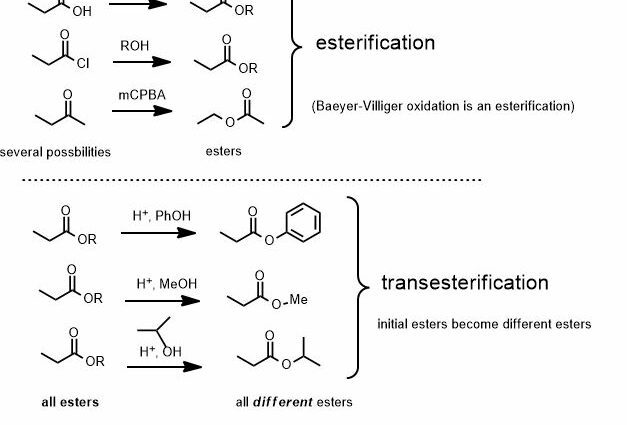Contents
Esterification: what is the difference between esterified oil and vegetable oil?
It is possible and even common to modify vegetable oils by a process called esterification. Why ? Why not ? The debate will continue after reading the article.
Some examples of vegetable oils
A vegetable oil is a liquid fatty substance at room temperature extracted from an oleaginous plant, that is to say a plant whose seeds, nuts or almonds contain lipids (fats).
Why be interested in the field of cosmetics? Because the surface of the skin (the epidermis) is made up of cells (keratocytes) sealed by a cement of phospholipids, vegetable cholesterol and polyunsaturated fatty acids.
Most vegetable oils also contain polyunsaturated fatty acids, hence their use to strengthen the natural properties of the skin or replace them in case of deficiency.
However, there are some exceptions such as for example coconut oil which is said to be “concrete” and which contains saturated fatty acids (it is not recommended).
There are more than 50 oleaginous plants from which virgin oils or fresh or organic macerates are extracted. The most used in cosmetics are:
- Argan, which grows in Morocco and serves to dilute essential oils;
- Jojoba, planted in the deserts of South America;
- Shea, which comes from Africa (solid state at room temperature);
- The almond tree, living around the Mediterranean basin but famous in Malaga, which also serves to dilute essential oils.
But the oils with wonderful names come from many, many wonderful plants growing in all corners of the world, more or less wonderful.
Rosehip (South America), Castor (India), Kamanja (Pongolotte tree from India), Camellia or Tea (India), Sea buckthorn (Tibet), etc., not to mention the macerates of daisies or monoi (flowers of Tahitian tiare). We have to stop, but the list is long.
But esterified oils come mainly from palm (tropical and subtropical areas, beaches and mountains) and coconut (Asia and Oceania).
Leave botany for chemistry
Far from the poetry of plants, let’s come to esterification.
Esterification concerns organic chemistry, it is the transformation of a substance into an ester by reacting an acid with an alcohol or a phenol.
In the operation that interests us here, fatty acids (almonds, nuts or seeds of the plants in question) are esterified to transform oils (liquids) or fats (solids) into esters. Note that oils are richer in unsaturated fatty acids than fats.
The fatty acids of a vegetable oil are therefore reacted with a fatty alcohol or a polyol such as glycerol, natural or synthetic.
This maneuver can be carried out cold or hot. The cold reaction would make it possible to retain the properties of the substances (the “active agents”) sought and the use of natural solvents would make it possible not to reduce their potency by dilution.
Note: the conditional has interfered in the text. Indeed, formulators and decision-makers are opposed. Organic labels are irregularly awarded. Remember that natural cosmetics praise esterified vegetable oils, while conventional cosmetics use silicones and mineral oils.
Mineral oils come from petrochemicals: they are cheap, stable, safe, with strong moisturizing and occlusive powers, but without nutritional power and little or no biodegradability. As for silicones, they are completely synthetic, resulting from the transformation of quartz.
The oil war is on
We have to start with an apparently rational explanation that is debated and even totally controversial.
- An esterified oil is a vegetable oil which has been transformed by a chemical reaction which makes it more penetrating, more stable and less expensive;
- The first controversy is the example of coconut or palm oils which contain vitamins, phytosterols (plant “assets”) and fragile essential fatty acids (omega 3 and 6) that hot esterification destroy;
- The second concerns their low cost. But the industrial production of palm or coconut oil is responsible for massive deforestation, in particular in South-East Asia (Indonesia, Malaysia) and in Africa (Cameroon and the Democratic Republic of Congo);
- The third is their easier use: esterified oils are easily incorporated into creams without prior heating operation. The creams are thus made more stable and keep better.
En conclusion
For each of the controversies, examples and counter-examples are argued. Perhaps the best way to get an idea is not to systematically oppose the two classes of oils but to consider them one by one as to their price, their properties, their manufacturing context as to the environment and other ecological dimension.
Esterified vegetable oils are intended to soothe the skin but not the spirits. Wisdom advises not to oppose them but to use them each for their respective virtues, even to use them alternately according to the needs of the skin.










